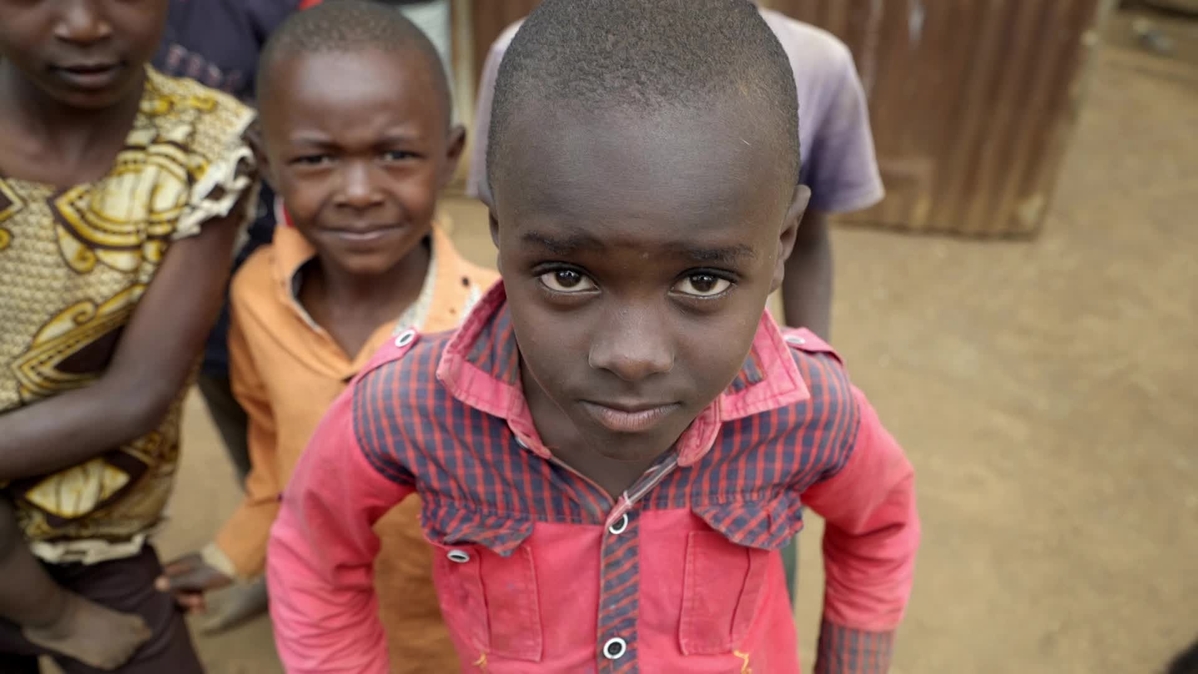UNICEF warns that an additional 6 000 children under five1 could die every day, without urgent action. On this Day of the African Child, Novartis remains committed to the health and wellbeing of Africa’s children.
An African child is 8 times more likely to die before his fifth birthday2 than one born in Europe. Pneumonia, diarrhea and malaria are the three biggest killer diseases of young children in Africa – representing 1 million deaths per year. In addition, sickle cell disease (SCD) is the single most important genetic cause of childhood mortality globally, and it takes a heavy toll on African children, also making them more susceptible to serious infections, most notably malaria and pneumonia. See how Novartis is taking action against these devastating diseases.
 VIDEO
VIDEO
Pneumonia is the biggest child killer in the world
A child dies of pneumonia every 39 seconds3. This preventable disease kills more children than any other infection in Africa and in the world.
Responding to the call from UNICEF to combat childhood pneumonia, Novartis developed pediatric amoxicillin, recommended by the World Health Organization as a first-line treatment for childhood pneumonia. Over the last five years, we have supplied five million pediatric amoxicillin treatments to UNICEF and Médecins Sans Frontières. Recently, we added a new child-friendly formulation of amoxicillin/clavulanic acid to our pediatric portfolio.
Yet, access to the medicine is only one element. Parents need to be able to spot the signs of the disease, and health workers need to know how to properly diagnose and treat pneumonia. Against this background, Novartis is supporting local partners in conducting education and training programs for parents and healthcare workers in Kenya and other African countries on how to identify and treat pneumonia.
Focusing on the germ that causes diarrhea-associated death
300 000 children aged under five die from diarrhea every year in Africa4, despite the availability of simple treatment solutions5 (oral rehydration therapy and zinc supplements). Cryptosporidium infection is a major pathogen responsible for diarrhea-associated death in young children. Leveraging results from our malaria research, Novartis has validated a novel molecular target to treat diarrhea caused by cryptosporidium. We are currently advancing the new drug candidate through preclinical studies to support the launch of clinical trials in patients.
Developing a new antimalarial for babies
The fight against malaria is one of the greatest public health successes. From 2000 to 2015, the mortality rate among children under five fell by more than 70% in Africa6. Yet, this deadly disease still kills more than 270 000 children under five every year. Together with partners, Novartis has been engaged in the fight against malaria for the past two decades, launching the first antimalarial designed specifically for children. To date, we have distributed 400 million treatments to children in malaria-endemic countries, contributing to a significant reduction in malaria deaths among children.
Infants weighing less than five kilograms remain among the most vulnerable to malaria in Africa, as there is no formulation specifically tailored to their needs. So together with Medicines for Malaria Venture (MMV), Novartis is developing a new formulation of our antimalarial artemether-lumefantrine to address this unmet need. Also in collaboration with MMV and with the financial support from Wellcome Trust, we are studying the effectiveness of two other compounds in children.
Building a holistic approach to address sickle cell disease
It is estimated that approximately 1 000 children in Africa are born with SCD every day and more than half will die before they reach the age of five.7 Novartis is committed to making hydroxyurea, the current standard of care, available to SCD patients at an affordable price and is currently developing a child-friendly formulation that would facilitate administration for children unable to swallow capsules.
In addition to effective treatment options, SCD management requires an integrated, holistic approach. Early diagnosis through newborn screening is the first step, but currently only an estimated 4% of children get tested. It is also important to strengthen health systems to better manage SCD, including through data collection and analysis, impact and outcomes monitoring, and scientific research, training and collaboration. Against this background, Novartis launched the Africa Sickle Cell Disease program, a first of-its-kind effort to manage the disease holistically in Africa.
Healthier lives offer more equal opportunity
Today, we call on the global health community to continue to mobilize resources and energy to ensure all children can grow up free of pneumonia, diarrhea and malaria. Healthier lives offer more equal opportunities. Every healthy child can go to school and get an education. Every successfully treated child relieves families and communities from the burden that disproportionately hits underprivileged populations.
We are committed to continuing to reimagine medicines for the children of the world because each child deserves a chance to live a full and healthy life.
 VIDEO
VIDEO